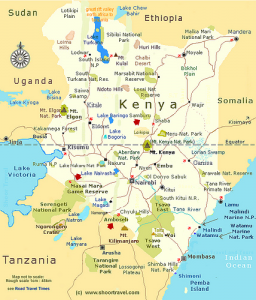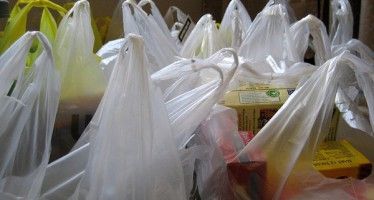California’s Global Regulatory Regime
 (Editor’s Note: This is the second part of a series on how California’s regulations affect the global economy. Part I is available here.)
(Editor’s Note: This is the second part of a series on how California’s regulations affect the global economy. Part I is available here.)
Aug. 16, 2012
By John Hrabe
California’s regulations aren’t just a California problem.
When the state’s obscure Office of Environmental Health Hazard Assessment began the process of regulating 4-methylimidazole, or 4-MEI, the subdivision of the state’s environmental protection agency was setting in motion a regulatory effort that would reach Kenya.
“We are monitored by an increased global regime of regulation and scientifically backed standards,” observed Peter Njonjo, general manager of Coca-Cola East Africa.
In chemical regulations, you only need one domino to fall. After one agency regulates a chemical, other regulatory bodies take note — even if the regulations aren’t based on clearly established, peer-reviewed scientific evidence. It also helps to have special interest groups that use scare tactics to frighten the public about products that cause cancer.
Assemblyman Mike Morrell, R-Rancho Cucamonga, despite being halfway around the world, echoed Njonjo’s complaint and put the blame in Sacramento.
“The long arm of California is reaching even further these days — to other nations around the world,” said Morrell, a member of the Assembly’s Committee on Environmental Safety and Toxic Materials. “It is concerning that there are unelected state workers making decisions about chemical regulations with little to no evidence.”
Regulatory Domino Effect: You Just Need One Agency
Dr. F. Peter Guengerich, the interim chairman of the biochemistry department at Vanderbilt University School of Medicine, told CalWatchDog.com that “the regulatory field has a lemming-like attitude, often reflecting biases.” His observation played out to a tee with the regulatory movement of 4-MEI, a common byproduct of the cooking process that gives sodas their caramel color.
Earlier this summer, one of Kenya’s largest newspapers called for a ban on 4-MEI.
“The use of that chemical by both Coca-Cola and Pepsi has been restricted in the US state of California following research which showed that it is potentially dangerous,” Kenya’s Daily Nation editorialized. “Samples tested in California showed that the Coke sold there had 4 micrograms of the chemical while the samples tested in Brazil contained 267 micrograms and in Kenya the amount was 177 micrograms.”
There was no mention that other regulators had approved of 4-MEI’s safety, nor was there any explanation that California’s safe harbor standard had been increased by 81 percent, without any new scientific research.
Njonjo, general manager of Coca-Cola East Africa, tried to set the record straight in the opinion pages of Kenya’s largest newspaper, The Standard.
“The decision was not a scientific one,” Njonjo wrote in his rebuttal. “Whereas, the State introduced a Federal directive based on flawed research, we chose to adhere to the state’s regulations. No other state or nation has put forth similar regulations.”
Njonjo’s argument is a good one. The European Food Safety Authority conducted a comprehensive review of the scientific evidence and concluded that 4-MEI is not a health concern. The same goes for Health Canada, the country’s federal health agency, which ruled that 4-MEI does “not represent a risk” to consumers.
Of course, a paid spokesman for a major multinational corporation that has a vested financial interest in defeating the regulation isn’t a great messenger. It’s especially challenging when you’re combating misinformation spread by a nonprofit with a trustworthy name.
 Special Interest Group Targets Coca-Cola in Kenya
Special Interest Group Targets Coca-Cola in Kenya
The Kenyan media frenzy over 4-MEI was kicked off with an ominous press release from an organization known as the Center for Science in the Public Interest. The headline: “Tests Show Carcinogen Levels in Coca-Cola Vary Worldwide.”
“Coca-Cola sold in California now contains little of the cancer-causing chemical 4 methylimidizole (4-MI),” read the opening sentence. “But new laboratory tests show alarming levels of the carcinogen in Cokes sold elsewhere around the world.”
Notice how the argument becomes ban 4-methylimidazole because California has done so. The “facts” are taken for granted. Secondary agencies never independently review the scientific evidence on their own.
The American Beverage Association has been battling the organization’s misinformation campaign for years.
“This is nothing more than CSPI scare tactics,” the association said in a statement responding to an earlier attempt to regulate 4-MEI in the United States. “CSPI fraudulently claims to be operating in the interest of the public’s health when it is clear its only motivation is to scare the American people.”
According to its own materials, the Center for Science in the Public Interest claims its mission is to help “scientists to provide the public, media, and policy-makers with the best advice about scientific issues.”
It also makes no secret of its more controversial tactics. CSPI proudly boasts on its nonprofit financial statements that it seeks to change food policy “through the litigation process, including identifying deceptively labeled or advertised products appropriate for lawsuits, providing expertise and resources to private litigants, or initiating (or threatening) litigation under state laws that bar unfair or deceptive marketing practices, and filing lawsuits to improve food policies.”
High Cost of Regulations
CSPI’s litigation playbook works because of measures, such as Proposition 65, that provide trial attorneys with a financial incentive to sue businesses.
Walter Olson, a senior fellow at the Cato Institute who has researched the economic impacts of Proposition 65, says that “a cadre of lawyers” has targeted businesses that sell everything from chicken to chalk.
“Most of the money in the resulting settlements goes to the lawyers, which is one reason defendants often describe Prop. 65 litigation as legalized extortion,” he wrote in a piece at the Daily Caller. “26 years later the law has benefited almost no one but litigators.”
According to the Western Farm Press, Prop. 65 “has generated more than 16,000 actions against businesses and nearly $500 million in settlements, attorney fees and costs.”
Static Regulations for Changing Science
Supporters of Prop. 65 argue that courts have repeatedly upheld the Prop. 65 review process. In one recent case, California Chamber of Commerce vs. Schwarzenegger et al., a state appellate court sided with regulators, while recognizing the lack of independent scientific review.
“Two of the listing methods set forth in subdivision (b) also include little or no independent review,” the court ruled. “Through the millennium, science has never been static, and what is “known” is necessarily defined by the state of the art at the time.”
Again, because the regulations spread across the globe, when the science changes it is incumbent on regulators to catch up.
Regulations Undermine Local Suppliers
When regulations force businesses to change their manufacturing systems, it also puts local producers at risk. Coca-Cola products have varying chemical compounds because ingredients are “sourced from different geographical locations across the world.”
“All our bottling partners in East Africa obtain their product concentrate from Swaziland, which also provides concentrate for the manufacture of our products in Australia and New Zealand,” said Norah Odwesso, a spokesperson for Coca-Cola Central, East and West Africa.
Now, Coca-Cola will be using the regulatory change to modify the caramel compound globally.
“We intend to expand the use of the modified caramel globally to allow us to streamline and simplify our supply chain, manufacturing and distribution systems,” said Kent Landers, a spokesman with Coca-Cola, told CalWatchDog.com.
Even if Swaziland’s suppliers are able to account for the change, the costs of regulations are disproportionately harmful to developing economies.
Can Kenya Afford the Cost of Regulation?
The National Federation of Independent Businesses says that the annual cost of American regulations is $10,585 per employee. The figure, which is disputed by groups including Media Matters, comes from a government-funded study commissioned by the Small Business Administration. According to the SBA study, the cost of implementing environmental regulations is “a whopping 364 percent more for small firms than large ones.”
Kenya’s economy is smaller and less regulated than the lawsuit-crazed USA. How many more regulations are there in the United States than in Kenya? Double? Triple? Quadruple? For argument’s sake, let’s say the cost of America’s regulations is a hundred times greater, or an annual burden of $105 per employee. In Kenyan purchasing power, that’s nearly a month’s per capita income.
Even if the Small Business Administration’s figures are on the high end, few will dispute that small economies and small businesses have a harder time bearing the cost of regulations. California’s $1.9 trillion economy can barely cope with Sacramento’s regulatory burdens. Kenya’s $33.62 billion economy is less than 2 percent of California’s.
“The same safety standard should apply across the world,” Kenya’s Daily Nation argued in the closing line of its editorial calling for regulation of 4-MEI.
California regulators should realize when they act, the rest of the world is watching.
Related Articles
CA plastic bag ban would hurt environment
In this dysfunctional state, it figures the Legislature likely soon could ban plastic bags at stores. AP reports: “Senate Bill 270
Independent jurist overseeing Bank of America case
This month federal judge Rya W. Zobel in Boston, Massachusetts, denied a class action lawsuit brought against Bank of America for
CA Energy Schemes: ‘We are getting fleeced’
April 5, 2012 By Katy Grimes The California Air Resources Board has created a stealthy new corporation in Delaware. The




